Are you looking for ways to incorporate Literacy skills in speech therapy sessions? Do you currently have a handful of students working on reading and writing skills and you just do not know where to take your therapy sessions? If you have students working on reading comprehension skills, writing skills, inferences, figurative language, or phonological awareness- then this article about literacy skills in speech therapy is for you!
Below I have provided you with information on different areas that speech pathologists target when it comes to literacy skills, as well as resources to turn to when supporting literacy development.
Ways to Support Literacy Skills in Speech Therapy: Resources and Ideas
1. Phonological Awareness:
Phonological awareness is the child’s ability to recognize sounds in spoken language and to be able to manipulate those sounds. This may include working on rhyming, segmenting words into smaller parts, combining sounds to form words, recognizing that words are made up of many different sounds, understanding sounds can be represented by written letters, generating words that begin with certain sounds, etc. Phonological awareness is the foundation for learning how to read.
Activity Ideas:
-
Rhyming:
Read rhyming books with your students to bring more awareness to rhymes. Point out the words that rhyme or have the students find the rhyming words. You can play rhyming games with your students, providing a word and then thinking of words that rhyme. There are digital resources available through The Digital SLP to work on phonological awareness skills, including naming rhyming words and identifying the first sound in words. These resources also go along with various themes, allowing your students to work on both phonological awareness skills and vocabulary development. Below are links to a few resources to target phonological awareness skills when working with students both in-person as well as via teletherapy.
- No Print Early Learning Spring Language Pack
- No Print Early Learning St. Patrick’s Day Language Pack
-
Segmenting:
Segmenting words into syllables using The Clapping Method: simply say the word and clap out the syllables. For example, if you want to segment the word “banana”, explain to your students to clap for each syllable, “ba…na…na”. Then have the students tell you how many syllables they heard. You can also change it up and instead of clapping, stomp your feet, jump up and down, give high-fives, etc. Another fun way to work on segmenting is the “hum method”, where you simply have the student hum the word and then count how many hums were made.
Segmenting whole words: if the student was able to successfully clap out syllables in words, then try the clapping method with whole word segmenting. For example, clap out each sound in the word “dog”, “d….o….g”. Have the child do it with you for the first few times and then try some independently. Segmenting longer words may be more challenging, especially words with speech sound clusters (i.e. “brush”), so start with shorter words (i.e. CV, VC, CVC word structures).
-
Blending Syllables:
Sounding out words, or blending syllables together, is another key skill within phonological awareness. Begin working on shorter words and then progress to longer words with your students. For example, when working on the word “banana”, say the word segmented, “ba…na…na”, and have the student sound it out and put all the sounds together.
You can use the same resources linked above from The Digital SLP to work on blending syllables as well. These resources provide simple words paired with visuals to use within these activities.
*Remind students that we always segment and blend sounds based on how they sound and not based on the letters that spell the actual word. Sounds may be made up of two letters (i.e. “ch”), but instead of sounding out the two letters separately, we sound out the sound we hear as a whole. For example, in the word “chin” we would not sound out “c…h…i…n”, instead “ch…i…n”.
2. Reading Comprehension:
Reading comprehension is understanding and interpreting information that is read. Find books to read and talk about the characters within the book, the plot, the setting, any problems that may occur, the solutions, etc. Use graphic organizers in order to sort out the students’ thoughts and ideas while reading the books. Finally, have the student retell the story and sequence what happened in the beginning, middle, and end in order to help them increase their understanding of the story. Being able to identify all of this key information while reading a book will allow the student to then increase overall reading comprehension skills.
There are several great resources available through The Digital SLP to work on reading comprehension skills. I have linked a few different reading passages with comprehension questions to use with your students. You can also find graphic organizers if you purchase the premium plan through The Digital SLP. These organizers will help your students to visually sort out details while reading books/articles to then increase comprehension skills. Lastly, working on making inferences will support overall reading comprehension skills.
- Summer reading passage – Soccer
- St. Patrick’s Day reading passage
- Inferencing Volume 1 with multiple choice
For more reading comprehension strategies, check out The Digital SLP Podcast Episode 27.
3. Reading Fluency:
Many students with reading and writing difficulties also have difficulty with reading fluency, or the ability to read text accurately, expressively, and quickly. Children who have difficulty with reading fluency may sound choppy or read slowly. Here are some strategies you can use in sessions to support reading fluency:
- Model fluent reading: By reading a passage or book out loud to your students, you are modeling fluent reading. Explain to your students what fluency means and read aloud to them so they are able to hear fluent speech, understand what fluent speech sounds like, and see the appropriate expressions used while reading.
- Choral reading: try reading at the same time as your student to allow the student to match your speed as well as expression while reading. If you are working with students in a group, practice choral reading altogether. Make it fun – read books, magazines, articles, etc. that are interesting to the students!
- Repeated readings: try finding a passage in a book, article, magazine, etc. that is interesting to the student. Have the students practice reading that same passage multiple times until they feel like they are to read the passage fluently. You can also read this passage aloud to the student so they can hear fluent speech as well as partake in choral reading. Having the student read the same passage multiple times helps them better recognize more high-frequency words that they will then see in other articles as well.
4. Figurative Language:
Figurative language is when you use a word or phrase beyond its literal definition. This is a fun and more complex way to use language when speaking and writing! One type of figurative language is the use of idioms. Idioms can be found in many different types of literature and children with language disorders typically have difficulty understanding idioms.
I have included a few links to resources on The Digital SLP that provide activities and information on idioms to use within sessions. I have also included a link to my podcast back in February of 2020 discussing idioms more at length to provide additional ideas.
Resources:
- No Print Idiom Lessons Volume 1, you can also find this resource on my TpT store.
- Idiom Cards Volume 1
- Podcast on tackling idioms
There are several different areas within fluency that speech-language pathologists can target within therapy in order to support our student’s ability to read and write. Understanding our role as speech and language pathologists in literacy instruction as well as finding fun and engaging activities or resources to target literacy goals will best support our students to continue to build their overall language development.
I hope you find the resources and ideas useful in supporting your students’ literacy skills in speech therapy.


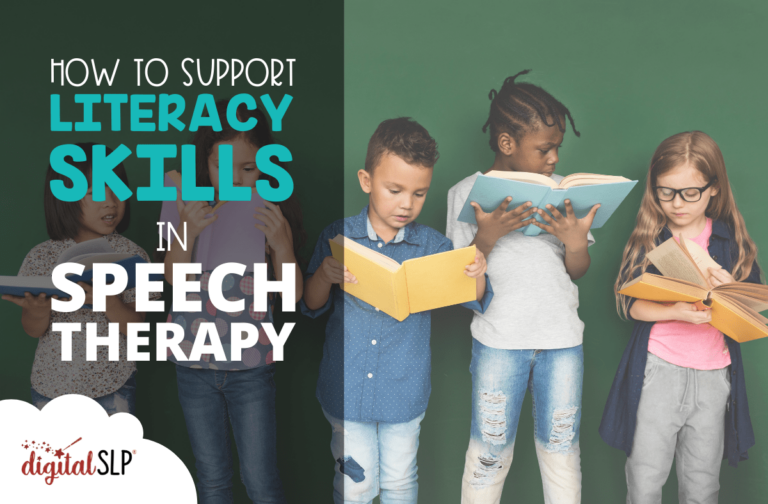



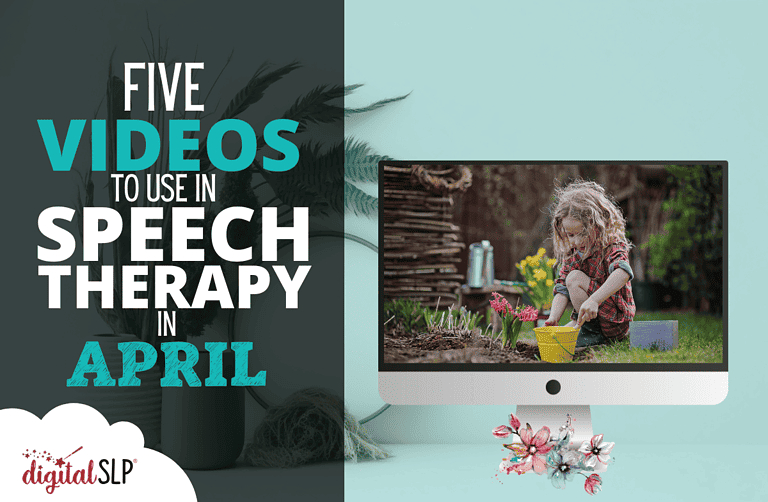
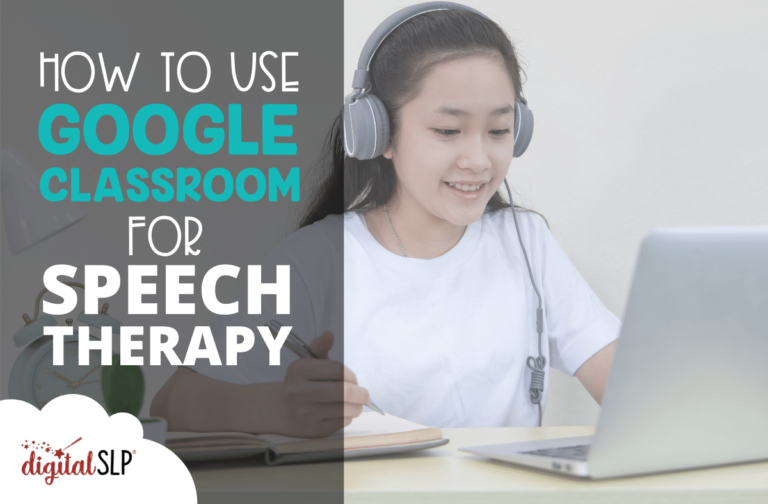
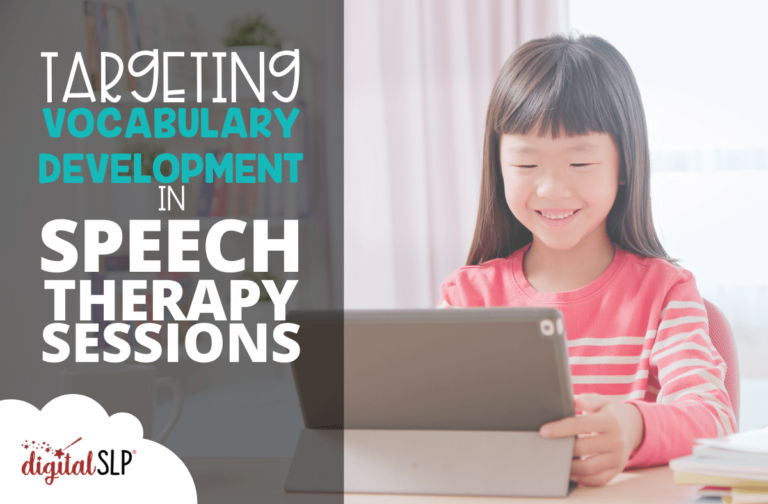


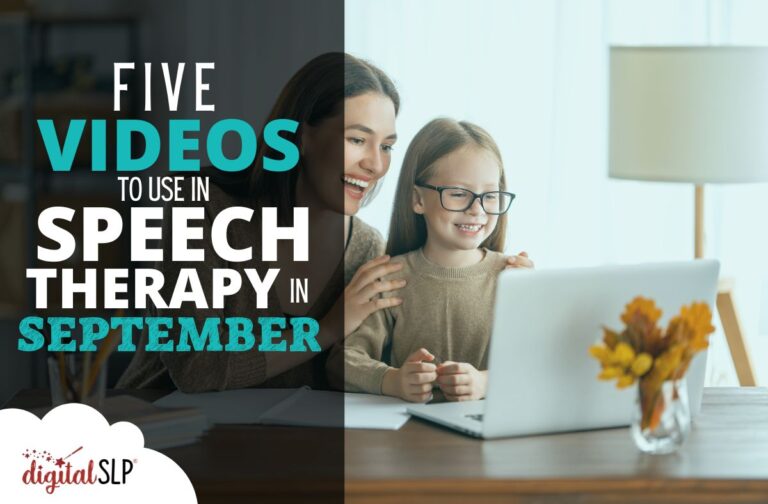

Recent Comments